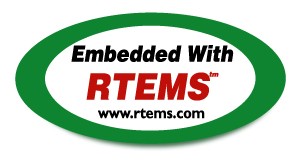


 RTEMS C User's Guide
RTEMS C User's Guide
The stack bounds checker operates as a set of task extensions. At task creation time, the task's stack is filled with a pattern to indicate the stack is unused. As the task executes, it will overwrite this pattern in memory. At each task switch, the stack bounds checker's task switch extension is executed. This extension checks that:
n bytes of the task's stack have
not been overwritten. If this pattern has been damaged, it
indicates that at some point since this task was context
switch to the CPU, it has used too much stack space.
If either of these conditions is detected, then a blown stack
error is reported using the printk routine.
The number of bytes checked for an overwrite is processor family dependent. The minimum stack frame per subroutine call varies widely between processor families. On CISC families like the Motorola MC68xxx and Intel ix86, all that is needed is a return address. On more complex RISC processors, the minimum stack frame per subroutine call may include space to save a significant number of registers.
Another processor dependent feature that must be taken into account by the stack bounds checker is the direction that the stack grows. On some processor families, the stack grows up or to higher addresses as the task executes. On other families, it grows down to lower addresses. The stack bounds checker implementation uses the stack description definitions provided by every RTEMS port to get for this information.
Copyright © 1988-2008 OAR Corporation